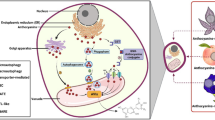Abstract
This study was carried out to investigate the addition of water-soluble isoflavone into milk by means of microencapsulation technique. The yield of microencapsulation, sensory attributes, and capsule stability of water-soluble isoflavone microcapsules in milk were measured. Coating materials used was polyglycerol monostearate (PGMS), and core material was water-soluble isoflavone. The encapsulation yield of water-soluble isoflavone with PGMS was 67.2% when the ratio of coating material to core material was 15:1. The rate of water-soluble isoflavone release from capsules was 18, 19, and 25% when stored at 4, 20, and 30°C for 12 days in milk, respectively. In sensory evaluation, beany flavor and color of microencapsuled water-soluble isoflavone added milk were significantly different from uncapsuled water-soluble isoflavone added milk, however, bitterness was not significantly different.In vitro study, micro-cap-sules of water-soluble isoflavone in simulated gastric fluid with the range of 3 to 6 pHs were released 3.0>15.0%, however, the capsules in simulated intestinal fluid with pH 7 were released 95.7% for 40 min incubation time. In conclusion, this study provided that PGMS as coating materials was suitable for the microencapsulation of water-soluble isoflavone, and the capsule containing milk was almost not affected with sensory attribute.
Similar content being viewed by others
References
Adlercreutz, H., Phytoestrogens: epidemiology and a possible role in cancer protection.Environ Health. Perspect., 103 (Suppl. 7), 103–112 (1995).
Ahn, J. and Kwak, H. S., Optimizing cholesterol removal in cream using β-cyclodextrin and response surface methodology.J. Food Sci., 64, 629–632 (1999).
Anthony, M. S., Clarkson, T. B., Hughes, C. L., Morgan, T. M., and Burke, G. L., Soybean isoflavones improve cardiovascular risk factor without affecting the reproductive system of peripubertal rhesus monkeys.J. Nutr., 126, 43–50 (1996).
Arliss, R. M. and Biermann, C. A., Do soy isoflavones lower cholesterol, inhibit atherosclerosis, and play a role in cancer prevention?Holist Nurs. Pract, 16(5), 40–48 (2002).
Berseníeva, E. A., Inanov, A. A., Sansonova, T. P., Chernova, E. M., and Oragvelidze, E. M., Microencapsulated aromatizers for tea.Pishchevaya Paomyshlennost USSR, 1, 57–59 (1990).
Braun, S. D. and Olson, N. F., Encapsulation of proteins and peptides in milk fat. Encapsulation efficiency and temperature and freezing stability.J. Microencapsulation, 3(2), 115–126 (1986).
Cassidy, A., Bingham, S., and Setchell, K. D., Biological effects of a diet of soy protein rich in isoflavones on the menstrual cycle of premenopausal women.Am. J. Clin. Nutr., 60, 333–340 (1994).
Cassidy, A., Bingham, S., and Setchell, K. D. R., Biological effects isoflavones in young women-importance of the chemical composition of soya products.Br. J. Nutr., 74, 547–560 (1995).
Fanti, P., Monier-Faugere, M. C., Geng, Z., Schmidt, J., Morris, P. E., Cohen, D., and Malluche, H. H., The phytoestrogen genistein reduces bone loss in short-term ovariectomized rats.Osteoporos Int., 8(3), 274–281 (1998).
Freund, O. J., Amedee, D. R. and Laversanne, R.,In vitro andin vivo stability of new multilamellar vesicles.Life Sci., 67, 411–419 (2000).
Fukui, K., Tachibana, N., Wanezaki, S., Tsuzaki, S., Takamatsu, K., Yamamoto, T., Hashimoto, Y., and Shimoda, T., Isoflavone-free soy protein prepared by column chromatography reduces plasma cholesterol in rats.J. Agric. Food Chem., 25,50(20), 5717–5721 (2002).
Grundy, S. M., Bilheimer, D., Blackburn, H., Brown, W. V., Kwiterovich, P. O. Jr., Mattson, R., Schonfeld, G., and Weidman, W. H., Rationale of the diet-heart statement of the American Heart Association. Report of Nutrition Committee.Circulation, 65(4), 839A-854A (1982).
Gurr, M. I., Dietary lipids and coronary heart disease: old evidence, new perspective.Prog. Lipid Res., 31(3), 195–243 (1992).
Jackson, L. S. and Lee, K., Microencapsulated iron for food fortification.J. Food Sci., 56, 1047–1050 (1991).
Kwak, H. S., Ihm, M. R., and Ahn, J., Microencapsulation of β- galactosidase with fatty acid esters.J. Dairy Sci., 84, 1576–1582 (2001).
Kwak, H. S., Nam, C. G., and Ahn, J., Low cholesterol Mozzarella cheese obtained from homogenized and β-cyclodextrin-treated milk.Asian-Aust. J. Anim. Sci., 14(2), 268–275 (2001).
Kwak, H. S., Kwon, S. H., Lee, J. B., and Ahn, J.,In vitro stability of β-galactosidase microcapsules.Asian-Aust. J. Anim. Sci., 15(12), 1808–1818 (2002).
Lee, D. K., Ahn, J., and Kwak, H. S., Cholesterol removal from homogenized milk with β-cyclodextrin.J. Dairy Sci., 82, 2327–2330 (1999).
Magee, E. L. Jr. and Olson, N. F., Microencapsulation of cheese ripening systems: Formation of microcapsules.J. Dairy Sci., 64, 600–610 (1981a).
Magee, E. L. Jr. and Olson, N. R., Microencapsulation of cheese ripening systems: Stability of microcapsules.J. Dairy Sci., 64, 611–615 (1981b).
Setchell, K. D. R. and Cassidy, A., Dietary isoflavones: Biological effects and relevance to human health.J. Nutr., 129, 758S-767S (1999).
Szejtli, J., Chapter 2: Cyclodextrin inclusion selected treatments for accelerating ripening of buffalo milk Cheddar cheese.Ph. D.Thesis. Gujarat Agricultural University Anand India (1988).
Author information
Authors and Affiliations
Corresponding author
Rights and permissions
About this article
Cite this article
Seok, J.S., Kim, J.S. & Kwak, H.S. Microencapsulation of water-soluble isoflavone and physico-chemical property in milk. Arch Pharm Res 26, 426–431 (2003). https://doi.org/10.1007/BF02976702
Received:
Issue Date:
DOI: https://doi.org/10.1007/BF02976702




